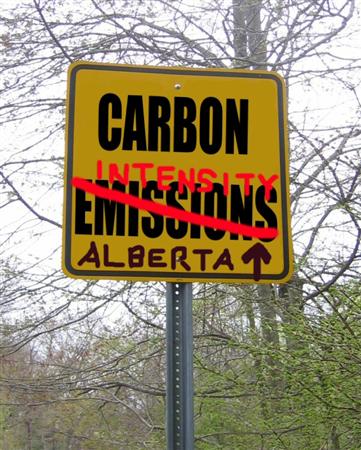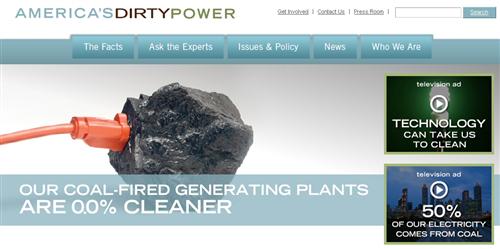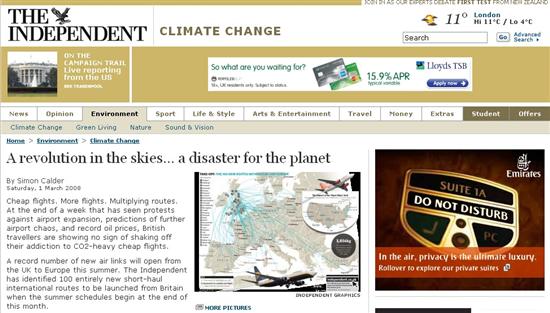
As I reported back in February, the Government of Alberta, Canada, have gone to great pains to pretend they are making progress on greenhouse gas emissions they try to demonstrate by using the completely discredited Carbon / Greenhouse Gas Intensity statistic. They still are. A simple analysis showed that Alberta’s emissions were going through the roof, and now this rise has been officially confirmed in an e-mail from Environment Minister, Rob Renner which I reproduce in full here*:
Premier Ed Stelmach has forwarded a copy of your recent letter regarding Alberta’s greenhouse gas intensity. I am pleased to respond on behalf of the Government of Alberta (GoA).
Alberta has been using emissions intensity as a standard of measurement for a number of years. Overall emissions in Alberta are rising, partly as a result of increasing development in the oil sands and partly as a result of increasing demand worldwide for petroleum products. Emissions intensity shows that while our economy continues to rise, the emissions per unit of economic output are decreasing. This demonstrates that production is becoming more efficient.
The GoA recognizes that global climate change is real and that progressive, immediate action is required to effectively respond to this important issue. The GoA remains committed to doing our fair share to reduce emissions while at the same time ensuring that our efforts are practical, achievable and allow for continued economic prosperity in the province.
Alberta was the first jurisdiction in Canada to develop a comprehensive plan to address climate change and the first Province to pass climate change specific legislation, which requires large industrial emitters to reduce their emissions.
Developed after extensive consultations with Albertans, Alberta’s 2008 Climate Change Strategy outlines the framework that ensures the GoA remains at the forefront of this issue, focusing our efforts on those opportunities that can deliver real, meaningful reductions. Our strategy will achieve real reductions that will be achieved over the short (2010), medium (2020) and long-terms (2050). The reductions will be realized through actions in the areas of carbon capture and storage [Ed: 70% of the total], conserving and using energy efficiently and greening energy production.
The GoA recognizes there is a need to reduce emissions; however, we cannot immediately stop emissions without severe disruption to our economy, which is also a major driver for national growth. The GoA believe the long-term nature of the strategy is the key to its success. By beginning now to reduce the rate of emissions, we will ensure that significant and lasting reductions will occur. The plan is focused on being practical and achievable, as well as encouraging innovation in Alberta industry. The strategy also commits us to develop a more specific climate change adaptation strategy to ensure that we minimize our risks to the real impacts of a changing climate. This is a realistic approach for our province.
The GoA is on a path to ensuring meaningful reductions through fundamental shifts in how we develop and use Alberta’s energy resources in ways that respond to the full range of needs of our customers across North America. The GoA will continue to work with our partners in industry, with other governments, including coordination with federal efforts, and all stakeholders, to put in place the technologies that will reduce emissions in ways that maintain the quality of life Albertans enjoy.
If you would like further information on the strategy, I encourage you to visit the GoA’s website at: www.alberta.ca.
Sincerely,
Rob Renner
Minister of Environment
c.c. Hon. Ed Stelmach
Premier
After some reflection about the complete lack of conviction in Alberta’s desire to reduce its global emissions contribution, I sent this reply which, again, I reproduce in full:
Dear Rob
I’m afraid this is the kind of response that makes me understand why governments are not to be trusted to deal with the climate crisis – I presume you have seen the latest news about the West Antarctic ice sheet; or perhaps you were distracted by the promise of new economic “opportunities” when the ice is all gone?
“The GoA recognizes there is a need to reduce emissions; however, we cannot immediately stop emissions without severe disruption to our economy, which is also a major driver for national growth.” No one is asking for an immediate cessation of emissions – this is what is known as a “straw man” argument: making an absurd suggestion in the face of a reasonable one in order to divert the attention from the reasonable suggestion. I wouldn’t expect anything else from a politician.
The reasonable suggestion is a year-on-year 10% reduction in emissions, in concert with a movement away from the hierarchical growth-driven economy that guarantees environmental catastrophe.
I think you will find this helpful:
http://earth-blog.bravejournal.com/entry/17630 [link to now defunct article]
Kind regards
Keith Farnish
www.theearthblog.org
www.unsuitablog.org
Remember, if it smells like hypocrisy, it probably is.
(*The disclaimer reads: “If you are not the named addressee you should not disseminate, distribute or copy this e-mail.” I was the named addressee.)














